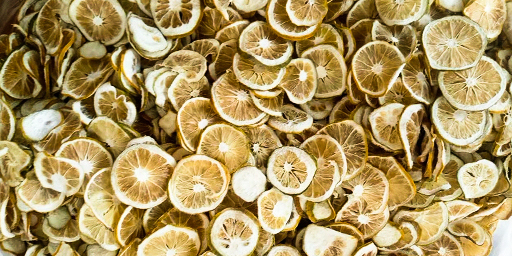Prescribe the right medicine to solve the problem of lemon slices drying black
Lemons are rich in vitamin C and are easily oxidized, so lemon slices left for a period of time will oxidize and turn black. With the increasing demand of consumers for lemon tea slices, the demand for drying lemon slices is increasing. The traditional drying of lemon slices is mainly done by burning firewood, coal, or fuel oil. The temperature is not easy to control, and the drying temperature is high. Lemon slices themselves contain sugar. After cooking, dried lemons tend to turn black, which affects the sales of dried lemons. phase and quality. In addition, burning firewood, coal, and fuel oil will produce harmful pollutants such as waste gas and waste, which will affect the environment and not meet the requirements of food production. Moreover, some crude production workshops have potential safety hazards.
Air energy-saving, environmental protection, and safety are more and more popular in the market, but the problem of blackening after drying still exists, because, in the drying process, high-temperature air flows through the surface of the material to achieve drying. Purpose, after the lemon slices come into contact with the air, there will be an oxidation site, which is unavoidable. In addition, the lemon itself contains sugar, and if the drying temperature is too high, it will be burnt, which will eventually cause the dried lemon slices to turn black. So, how to alleviate the blackening of lemon slices has become a difficult problem faced by many distributors and customers. Come and listen to the experience sharing of Shuntec Machinery Company!
The main reason for the blackening of lemon slices is oxidation, so the solution is to minimize the time of contact with air and the oxygen content in the drying room when drying. At present, drying equipment on the market is mainly divided into two types: high-temperature drying and dehumidification type and closed dehumidification and drying type. The principle of high-temperature drying and dehumidification type equipment is to evaporate the moisture inside the material through high-temperature hot air, and then through The form discharges the moisture in the air, and at the same time enters the fresh air from the outside, so that the air in the drying room is continuously entering until the drying is over. Therefore, in the process of dehumidification and fresh air intake, the air in the drying room is constantly exchanged with the outside air, and the amount of oxygen will not be reduced due to the oxidation of lemon slices, which will accelerate the oxidation of lemon slices and eventually aggravate the problem. Lemon slices turn black.
The closed dehumidification and drying equipment remove moisture through dehumidification equipment, and no fresh air is needed during the drying process, so the air that the material comes into contact with during the entire drying process is in the drying room, and its oxygen content is basically the same. Fixed, so the phenomenon of oxidation of lemon slices will be reduced.
Lemons need to be cleaned before drying. There are saltwater cleaning methods, soda water cleaning methods or ultrasonic cleaning methods, etc. The main purpose is to clean and remove pesticide residues or wax. drying time, thereby reducing the oxidation of the lemon slices. Cut the fruit into thin slices of about 4mm by hand or with a lemon slicer. Pay attention to the uniform thickness and the error should not exceed ±1mm. Place the lemon slices neatly on a ventilated tray and avoid stacking.
Quickly transfer the lemon slices to the drying room. The drying temperature is generally around 50°C. The temperature should not be too high, because the lemon itself contains sugar. If the temperature is too high, the sugar will burn and cause the lemon slices to turn black after drying. According to Shuntec, to dry 2,000-2,500 catties of lemon slices, a 15P closed-type dehumidification dryer is required. The drying temperature is divided into three stages, and the temperature settings are 43°C, 45°C, and 50°C. The maximum temperature for drying lemon slices should not exceed 60°C. Keep drying at medium and low temperatures to reduce the loss of nutrients. The drying time is about 15 to 20 hours. The specific needs depend on the maturity of the lemons, the thickness of the slices, and the drying season. Sure. (for reference only, not for simple application).



